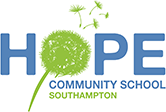At Ho pe Community School we attempt to balance a number of important elements in art education:
pe Community School we attempt to balance a number of important elements in art education:
- Opportunities for new experiences, balanced with
- Time for repeated practice.
- Structured learning, balanced with
- Space for personal exploration.
- The accumulation of technical skills and contextual knowledge, balanced with
- Growing self-awareness of what it is to be a creative being.
Through all of the above, our aim is to enable individual pupils to make appropriate choices regarding materials and processes and to be empowered towards making a personal, creative response.
The plan is based upon a creative and holistic approach, which shows the inter-relations between various aspects of the visual arts, demonstrating how subject knowledge, skill and progression is built when all the elements work together.
We acknowledge the importance of teaching specific skills, sensitively modelling some materials, and introducing a wide variety of materials, concepts and artists as soon as possible.
We also advocate the importance of pupils being enabled to follow their own creative pathway, and the progression plan shows how this might best be encouraged to happen. When to let a child go, (and we would always argue that that should be as as soon as possible) and how to enable that exploration, is key to a successful art education.
The progression plan below attempts to balance two very important elements of a high quality visual arts education: 1) practice with 2) novelty. The plan demonstrates how opportunities can be created for repeated practice and consolidation of skills, alongside opportunities to introduce new materials and concepts to feed and excite the creative process.
